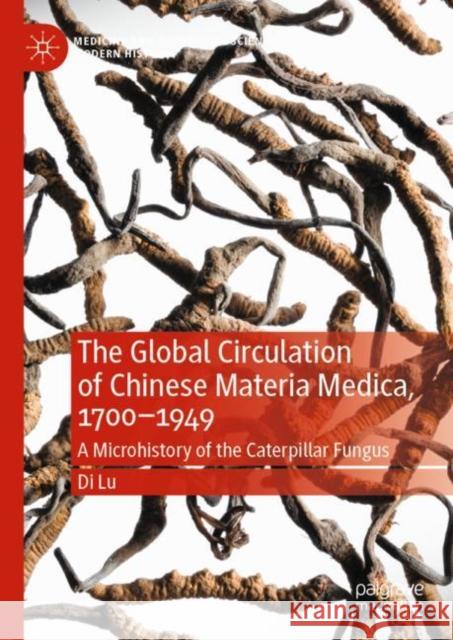The Global Circulation of Chinese Materia Medica, 1700–1949: A Microhistory of the Caterpillar Fungus » książka
The Global Circulation of Chinese Materia Medica, 1700–1949: A Microhistory of the Caterpillar Fungus
ISBN-13: 9783031247224 / Angielski / Twarda / 2023 / 128 str.
The Global Circulation of Chinese Materia Medica, 1700–1949: A Microhistory of the Caterpillar Fungus
ISBN-13: 9783031247224 / Angielski / Twarda / 2023 / 128 str.
(netto: 482,85 VAT: 5%)
Najniższa cena z 30 dni: 501,19 zł
ok. 20 dni roboczych.
Darmowa dostawa!
This book explores the dissemination of knowledge around Chinese medicinal substances from the eighteenth to twentieth centuries in a global context. The author presents a microhistory of the caterpillar fungus, a natural, medicinal substance initially used by Tibetans no later than the fifteenth century and later assimilated into Chinese materia medica from the eighteenth century onwards. Tracing the transmission of the caterpillar fungus from China to France, Britain, Russia and Japan, the book investigates the tensions that existed between prevailing Chinese knowledge and new European ideas about the caterpillar fungus. Emerging in eighteenth and nineteenth-century Europe, these ideas eventually reached communities of scientists, physicians and other intellectuals in Japan and China. Seeking to examine why the caterpillar fungus engaged the attention of so many scientific communities across the globe, the author offers a transnational perspective on the making of modern European natural history and Chinese materia medica.
This book explores the dissemination of knowledge around Chinese medicinal substances from the eighteenth to twentieth centuries in a global context. The author presents a microhistory of the caterpillar fungus, a natural, medicinal substance initially used by Tibetans no later than the fifteenth century and later assimilated into Chinese materia medica from the eighteenth century onwards. Tracing the transmission of the caterpillar fungus from China to France, Britain, Russia and Japan, the book investigates the tensions that existed between prevailing Chinese knowledge and new European ideas about the caterpillar fungus. Emerging in eighteenth and nineteenth-century Europe, these ideas eventually reached communities of scientists, physicians and other intellectuals in Japan and China. Seeking to examine why the caterpillar fungus engaged the attention of so many scientific communities across the globe, the author offers a transnational perspective on the making of modern European natural history and Chinese materia medica.











